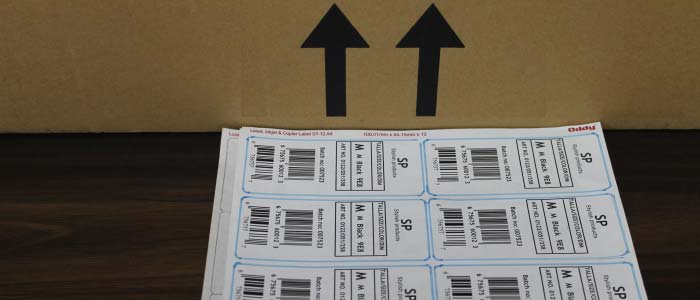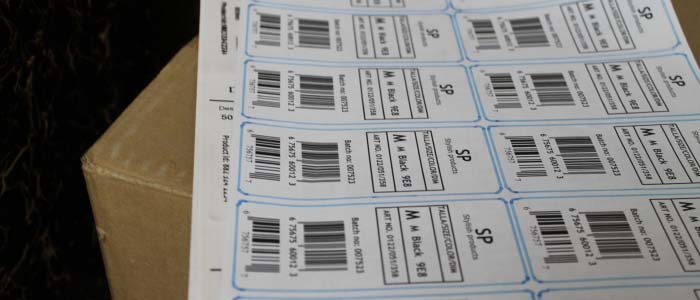Barcode System in Banking Industries
Barcode systems are an essential tool for banks to improve efficiency in their operations. By using barcodes for automated data entry, streamlined workflows, asset tracking, fraud prevention, and reporting and analytics, banks can improve efficiency, accuracy, and security in their operations.

Barcode Systems Help With Customer Service in the Banking Industry
Barcode systems can help improve customer service in the banking industry in several ways:
Quick and Accurate Transactions: Barcode systems can be used to quickly and accurately scan checks, deposit slips, and other documents, reducing wait times and improving transaction accuracy.
Reduced Errors: Barcode systems can help reduce errors that can occur during manual data entry, such as incorrect account numbers or deposit amounts.
Improved Account Security: Barcode systems can be used to verify account information, reducing the risk of identity theft and fraud.
Enhanced Customer Experience: Barcode systems can help reduce wait times and improve transaction accuracy, resulting in a better overall customer experience.
Faster Account Access: Barcode systems can be used to quickly retrieve account information, reducing wait times and improving customer satisfaction.
Efficient Account Management: Barcode systems can be used to manage account information and transactions, reducing errors and streamlining the account management process.
Overall, barcode systems can help improve customer service in the banking industry by reducing wait times, improving transaction accuracy, enhancing account security, and providing faster and more efficient account access and management.Barcode systems help prevent fraud and security breaches in the banking industry
Barcode systems can help prevent fraud and security breaches in the banking industry by providing a secure and reliable means of verifying the authenticity of financial documents and transactions. Here are some ways barcode systems can help prevent fraud and security breaches:
-
Document Authentication
Barcode systems can be used to verify the authenticity of financial documents such as checks and deposit slips, reducing the risk of fraudulent transactions.
-
Identity Verification
Barcode systems can be used to verify the identity of customers, ensuring that only authorized individuals have access to sensitive financial information.
-
Transaction Security
Barcode systems can be used to securely transmit transaction data, reducing the risk of interception or tampering.
-
Access Control
Barcode systems can be used to control access to sensitive areas within banks and financial institutions, ensuring that only authorized personnel have access.
-
Audit Trail
Barcode systems can be used to create an audit trail of financial transactions, allowing for easy tracking and monitoring of suspicious activity.
Overall, barcode systems can help prevent fraud and security breaches in the banking industry by providing a secure and reliable means of verifying the authenticity of financial documents and transactions, verifying customer identity, securing transaction data, controlling access to sensitive areas, and creating an audit trail for monitoring and tracking suspicious activity.

Barcode systems help banks to track and manage assets and inventory
Barcode systems can help banks manage and track their inventory of cash, checks, and other assets by providing a reliable and efficient means of tracking and recording transactions. Here are some ways barcode systems can help:
-
Equipment Tracking
Barcode systems can be used to track bank equipment such as computers, printers, and scanners. This helps banks monitor the location and status of their equipment and reduce the risk of loss or theft.
-
Inventory Management
Barcode systems can be used to track bank inventory such as supplies, cash, and documents. This helps banks optimize inventory levels, reduce waste, and improve purchasing and restocking.
-
Asset Management
Barcode systems can be used to track bank assets such as buildings, furniture, and vehicles. This helps banks monitor the location and status of their assets and optimize their use.
-
Maintenance Tracking
Barcode systems can be used to track maintenance schedules for bank equipment and assets. This helps banks ensure that their equipment and assets are properly maintained and reduces the risk of breakdowns or failures.
-
Analytics
Barcode systems can provide banks with data and analytics on asset and inventory usage, enabling them to optimize their operations and reduce costs.
-
Cash Management
Barcode systems can be used to track and manage cash inventory, reducing the risk of errors or discrepancies. Barcode labels can be applied to cash bags and envelopes, and scans can be recorded as cash is received, disbursed, or transferred between locations.
-
Check Processing
Barcode systems can be used to process checks quickly and accurately. Barcodes can be printed on the checks themselves or on accompanying documents such as deposit slips, allowing for easy and efficient processing.
-
Fraud Prevention
Barcode systems can help prevent fraud by enabling quick and accurate verification of check and cash information. Barcodes can be used to verify the authenticity of checks and to check the accuracy of cash counts.
-
Reporting and Analytics
Barcode systems can provide banks with detailed reports and analytics on their inventory and asset usage, enabling them to make data-driven decisions and optimize their operations.
Overall, barcode systems are an essential tool for banks to track and manage their assets and inventory. By using barcode systems to track equipment, inventory, assets, maintenance, and analytics, banks can reduce the risk of loss or theft, optimize inventory levels and asset use, improve maintenance schedules, and enhance overall operational efficiency.